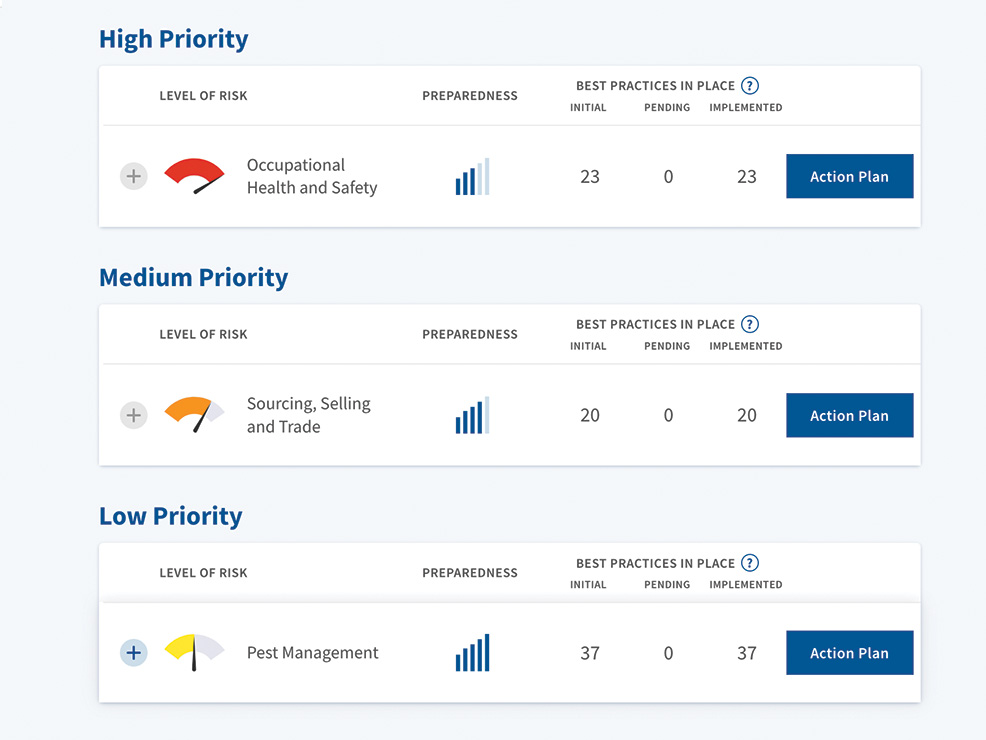Assess your risk readiness with the AgriShield scorecard
Too hot. Too cold. Too dry. Too wet. Weather takes up a lot of the risk management energy for crop producers. The big reason why canola yields have been flat or dropping over the past six years is related to weather. But weather is just one of many risk factors on the farm. How do you track and manage all those other business risks?
The AgriShield risk scorecard at myagrishield.ca will help you answer that question. Farm Management Canada developed the comprehensive risk assessment and mitigation platform especially for Canadian farmers.
“Farmers put a lot of effort into crop and livestock production, obviously. Without crops or animals to sell, there isn’t much of a business,” says Heather Watson, executive director of Farm Management Canada in Ottawa. “Yet when you look at your farm as a whole, production is only one of a myriad of success factors. We have identified six risk areas producers should monitor
to manage farm risk.”
The six risk areas are:
- People
- Finance
- Markets
- Management
- Business Environment
- Production
Within those six risk areas are a number of risk categories, including familiar farm business topics: personal well-being, cost of inputs, transition planning, and of course, weather conditions.
“By taking a few hours in the off-season to work through AgriShield, farmers can actually visualize their risks,” Watson says. “Some of these risks will be familiar and well-managed. Some may not be top of mind. The beauty of AgriShield is that it helps farmers decide if certain risks are a priority or not.”
The process
The risk assessment process includes dozens of questions under the six risk areas. The following example is from the “Sourcing, selling and trade” category within the Markets risk area:
Example Question: Are the following practices currently used
on your farm?
- Develop a formal, written marketing plan describing your business activities, your marketing objectives, your current marketing position and your target market(s).
- Calculate and monitor the cost of production for each type
of production on your farm.

After going through the questions, the program calculates your responses and scores each category as low, medium or high priority.
After going through the questions, the program calculates your responses and scores each category as low, medium or high priority. Categories that score in the red are high priorities for extra thought and action. The program then gives a list of actions to inform your risk management planning, such as the following two from “Occupational health and safety” in the People risk area:
- Make sure that at least one person on the farm follows regular
first aid and CPR training. - Ensure complete first aid kits are readily available at all times on the farm and that they are well maintained.
“Unlike other assessment or planning tools, AgriShield takes the guesswork out of risk management planning by providing producers with a ready-made list of best practices to manage and mitigate risk,” says Watson. “All you have to do is choose the solutions that will work best for you.”
AgriShield costs $150 for an annual subscription. Content is based on Farm Management Canada’s Comprehensive Guide to Managing Risk in Agriculture, literature reviews and consultations with farmers, advisors, academia and government across Canada. For more information, email info@fmc-gac.com or go to myagrishield.ca to sign up. Take advantage of the free trial if you’d like to try before you buy.




